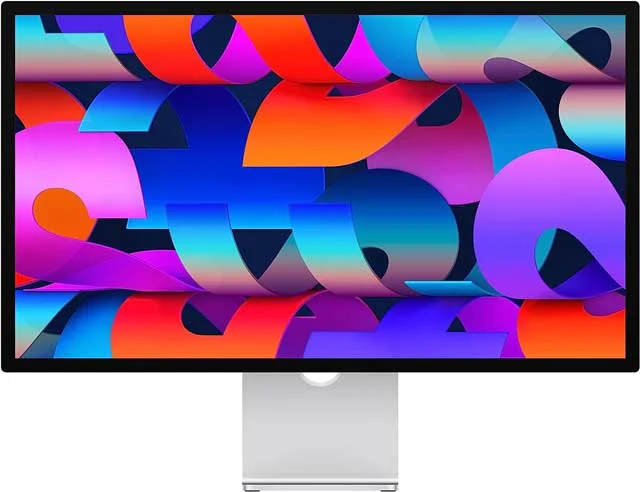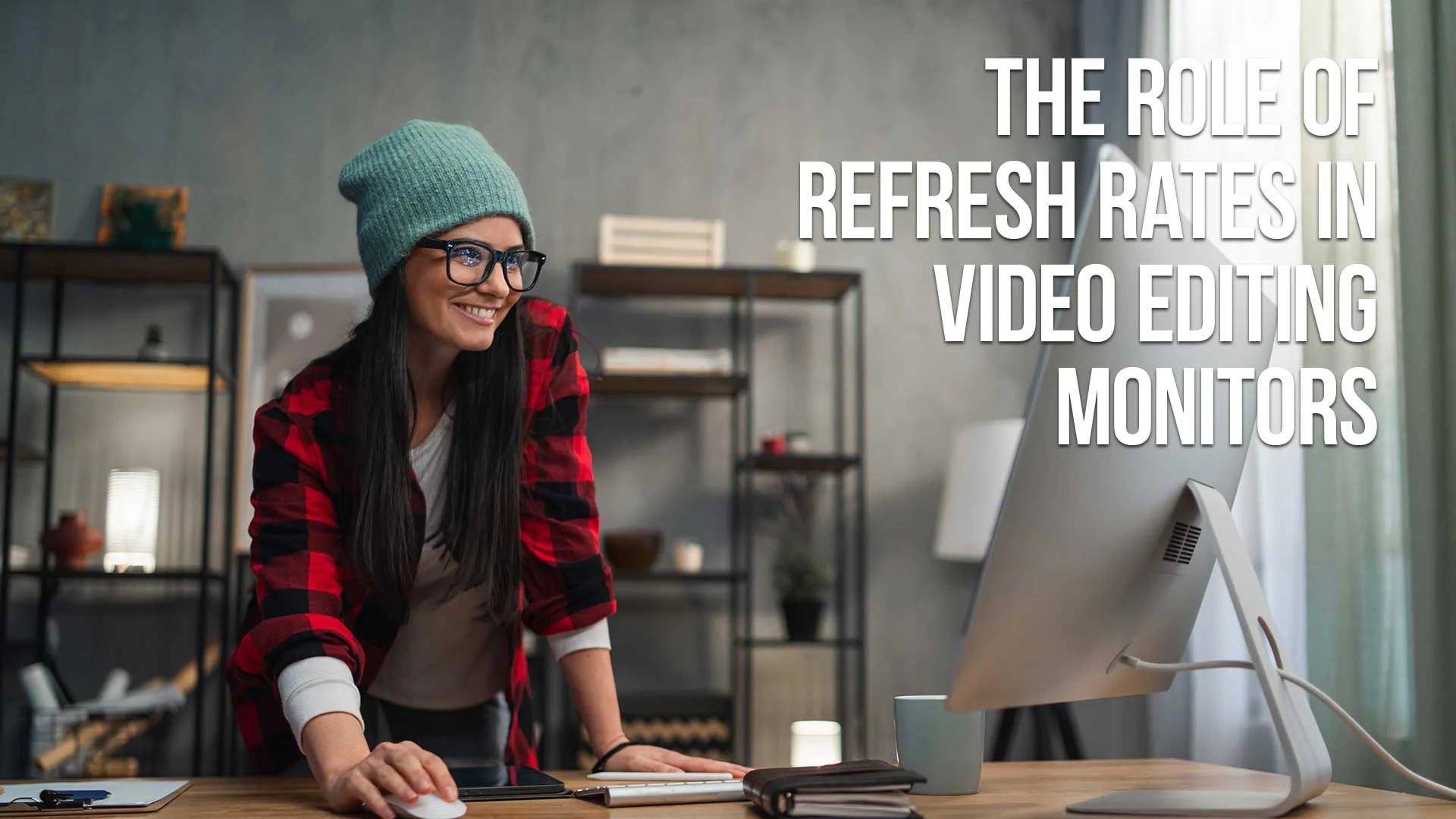Parent Article: The Best Monitors for Video Editing
As a video editor, you know that having the right equipment is essential to getting the job done correctly.
One of the most critical components of your setup is your monitor, as it can impact your workflow, color accuracy, and overall productivity.
One aspect of monitors that often gets overlooked is the refresh rate.
In this article, we'll explore the role of refresh rates in video editing monitors and why it matters.

What is Refresh Rate?
Refresh rate is the number of times per second that a monitor updates its display. It's measured in Hertz (Hz), and a higher refresh rate means a more responsive and smoother image.
For example, a monitor with a 60Hz refresh rate refreshes the image on the screen 60 times per second.
Why Does Refresh Rate Matter?
When it comes to video editing, a high refresh rate is crucial because it can reduce motion blur, increase image clarity, and enhance your overall viewing experience.
If your monitor has a low refresh rate, it can result in choppy video playback, and you may miss important details that could impact the final product.
How to Choose the Right Refresh Rate for Video Editing?
When selecting a monitor for video editing, you'll want to consider the refresh rate based on the type of work you'll be doing.
If you're working with fast-moving images or editing high-resolution videos, you'll want a monitor with a higher refresh rate, such as 120Hz or even 240Hz.
If your work is less demanding, a 60Hz monitor will suffice.
Can Refresh Rate Affect Color Accuracy?
Refresh rate can have an impact on color accuracy, but it's not as significant as other factors such as contrast and brightness.
However, if you're working with high-quality content and require accurate color representation, a higher refresh rate monitor may be beneficial.
What About Response Time?
Response time is another essential factor to consider when selecting a monitor for video editing. It's the time it takes for a pixel to change from one color to another.
A lower response time means a faster transition and can reduce ghosting or motion blur in fast-paced content.
Conclusion
In conclusion, refresh rate is an essential factor to consider when selecting a monitor for video editing.
A higher refresh rate can enhance your overall viewing experience, reduce motion blur, and increase image clarity.
When selecting a monitor, consider your workflow and the type of work you'll be doing. Choose a monitor with a refresh rate that suits your needs.
Video Editing Monitor Refresh Rate FAQ
What is the recommended refresh rate for video editing?
The recommended refresh rate for video editing depends on the type of work you'll be doing. If you're working with fast-moving images or high-resolution videos, a higher refresh rate monitor such as 120Hz or 240Hz is recommended. If your work is less demanding, a 60Hz monitor will suffice.
Can refresh rate affect video playback?
Yes, refresh rate can impact video playback. If your monitor has a low refresh rate, it can result in choppy video playback and you may miss important details that could impact the final product.
Can refresh rate affect color accuracy?
Refresh rate can impact color accuracy, but it's not as significant as other factors such as contrast and brightness. However, if you're working with high-quality content and require accurate color representation, a higher refresh rate monitor may be beneficial.
What is response time?
Response time is the time it takes for a pixel to change from one color to another. A lower response time means a faster transition and can reduce ghosting or motion blur in fast-paced content.
Can I use a TV for video editing?
While a TV can technically be used for video editing, it's not recommended. TVs typically have a lower refresh rate and response time compared to monitors, which can impact your overall editing experience. Additionally, TVs may not have the same level of color accuracy and calibration options as monitors, making it difficult to achieve accurate color representation.
Are gaming monitors good for video editing?
Gaming monitors can be suitable for video editing as they often have a high refresh rate and response time, which can enhance your viewing experience. However, gaming monitors may not have the same level of color accuracy and calibration options as professional-grade monitors, so it's important to consider your specific needs before making a purchase.
Can I adjust the refresh rate on my monitor?
Most monitors allow you to adjust the refresh rate through your computer's settings or through the monitor's on-screen display menu. However, not all monitors have the option to change the refresh rate, so it's essential to check the specifications before making a purchase.
Do all video editing software require a high refresh rate monitor?
No, not all video editing software requires a high refresh rate monitor. However, if you're working with fast-moving content or high-resolution videos, a higher refresh rate can enhance your editing experience.
Can a low refresh rate monitor cause eye strain?
A low refresh rate monitor can cause eye strain, particularly when working for extended periods. This is because a low refresh rate can cause flicker, which can be tiring for the eyes. Choosing a monitor with a higher refresh rate can reduce eye strain and make for a more comfortable editing experience.
Does a higher refresh rate monitor use more power?
A higher refresh rate monitor can use slightly more power than a lower refresh rate monitor, but the difference is minimal. The primary factor that impacts a monitor's power consumption is the screen size and resolution.
Can I use a lower refresh rate monitor for audio editing?
Yes, a lower refresh rate monitor is suitable for audio editing as it doesn't require the same level of motion clarity as video editing. However, it's still essential to choose a monitor with a high-quality display and color accuracy for accurate representation of audio waveforms.
Do I need a specialized graphics card for a high refresh rate monitor?
A specialized graphics card is not necessary for a high refresh rate monitor, but it can enhance your overall editing experience. A dedicated graphics card can handle more data and provide smoother performance when working with high-resolution videos or fast-moving content.
Can I connect a high refresh rate monitor to a laptop?
Yes, you can connect a high refresh rate monitor to a laptop as long as your laptop's graphics card supports the monitor's refresh rate. It's essential to check your laptop's specifications and ensure that it has the necessary ports to connect to the monitor.
Can I use a high refresh rate monitor for other tasks besides video editing?
Yes, a high refresh rate monitor can be beneficial for other tasks besides video editing, such as gaming or watching movies. It can enhance your overall viewing experience and provide smoother performance.
Table of Contents
- What Is Refresh Rate?
- Why Does Refresh Rate Matter?
- How To Choose The Right Refresh Rate For Video Editing?
- Can Refresh Rate Affect Color Accuracy?
- What About Response Time?
- Conclusion
- Video Editing Monitor Refresh Rate FAQ
Video Monitors Related Posts
The Best Monitors Compatible with MacBook Pro
Best Monitors for Video Editing
Understanding Monitor Resolution and Its Impact on Video Editing
Calibrating Your Video Editing Monitor for Optimal Color Accuracy
The Benefits of Dual-Monitor Setups for Video Editing
Future-Proofing Your Video Editing Setup: Choosing a Monitor with Upgrade Potential
Minimizing Eye Strain and Fatigue with the Right Video Editing Monitor
How to Choose the Right Video Editing Monitor for Your Needs
What to Look for in HDR-Capable Video Editing Monitors
The Importance of Color Accuracy in Video Editing Monitors
IPS vs. TN Panels: Which is Better for Video Editing Monitors?
